Grant and I spent a couple hours spreading wood chips to double the size of his garden.

Heather and I planted about 10 feet of onions on row 1 of our garden.
Grant and I spent a couple hours spreading wood chips to double the size of his garden.

Heather and I planted about 10 feet of onions on row 1 of our garden.
We have a second cold frame now. This one has an auto-opening top based on the temperature.
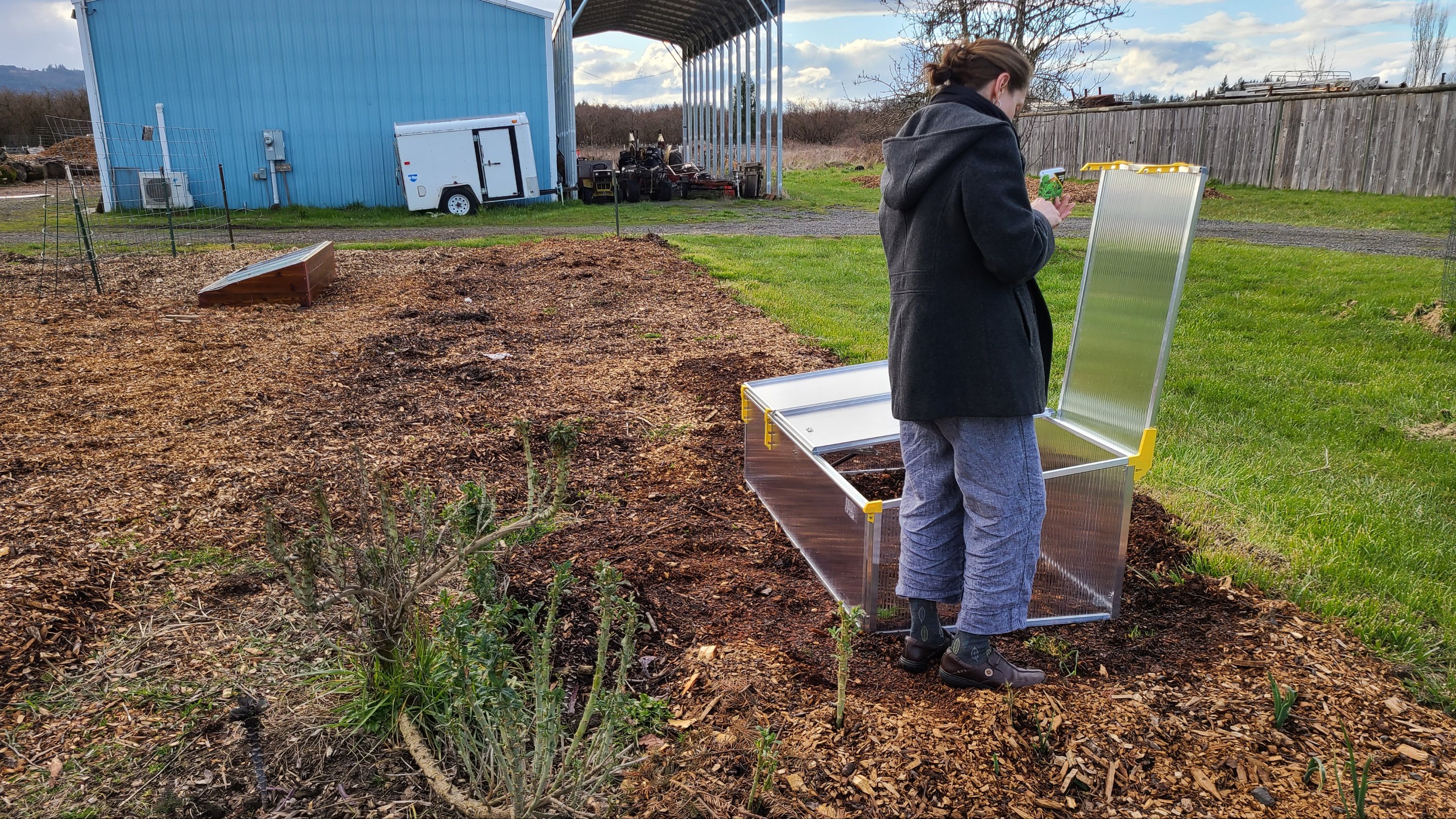
The weather was cold and snowy in the second half of February.
I did winter pruning this week. Aggressive on the grapes as usual, lightly on the pear and plum, and almost nothing on the young fruit trees we planted in 2019.
We cleaned up the garden and put on a layer of wood chips today. And I gave the lawn its first cut of the year.
We also built a cold frame out of an old window we removed from the house and some scrap wood.
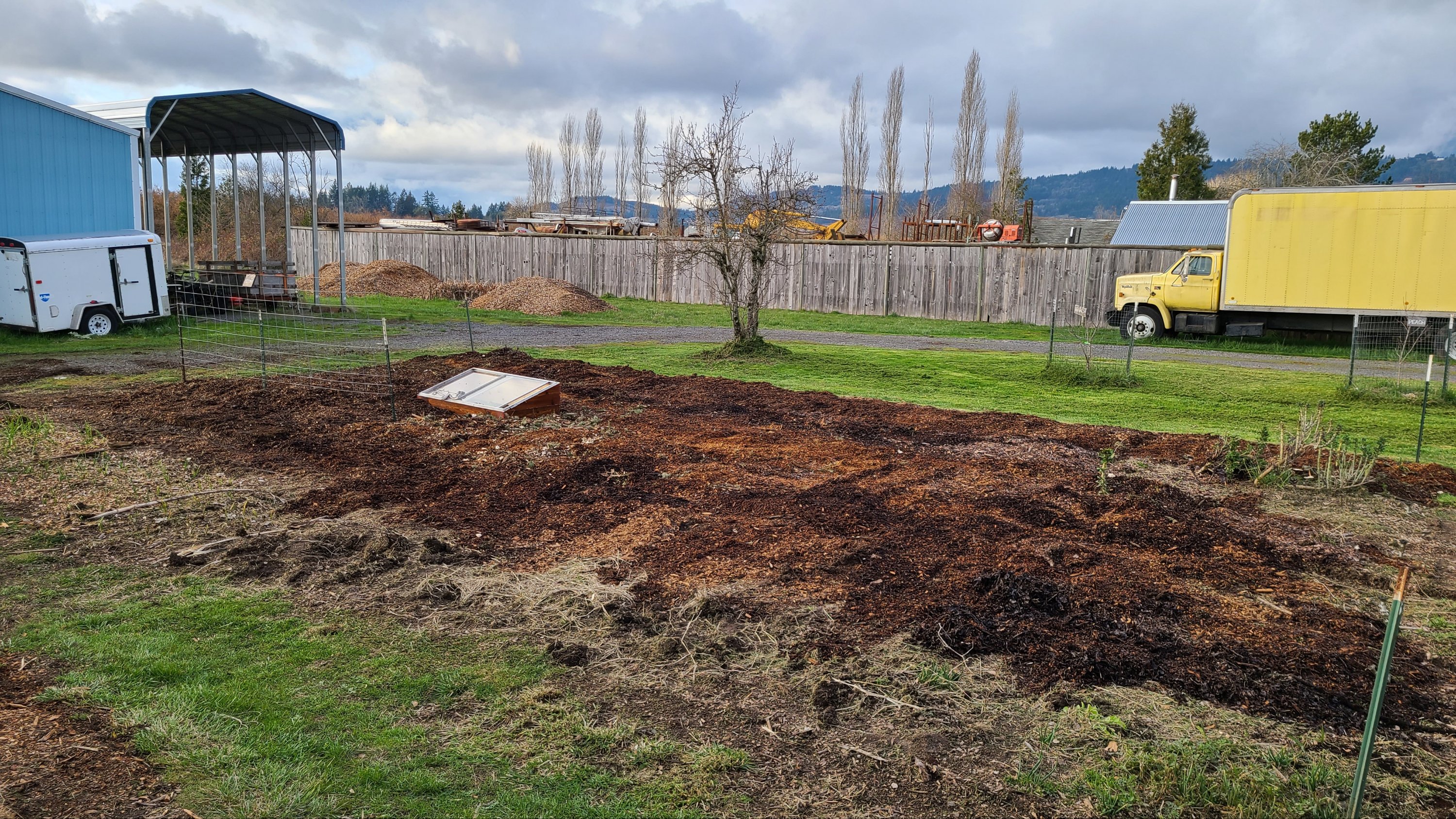
I had to split the tractor again. The clutch pressure plate levers all broke. Weird. I was quicker at it this time, though. It’s running nicely now.
We were fortunate to get another load of seasoned firewood, so we’ll probably end up using maybe two cords this winter. We’re using more now that we have more. We have lots of green wood to cut and split, including some humongous chunks of maple. That’s great wood for burning. We’re also gradually figuring out how to manage fires in the woodstove. It seems like it’s best to get it up to a high temperature (600º F) before switching the bypass damper and activating the catalyst. Otherwise, it smokes.
We’ve checked out a couple farmers markets last weekend and today to see what kind of produce they’re selling this time of year so we can improve our year-round gardening. Leeks, garlic, onions, potatoes, kale, radicchio, and a great find: January king cabbage.
Heather planted garlic all over the place last fall. It’s looking great so far.
Lots to catch up on:
The garden was later than usual this year but quite productive. We had days in the 80s into mid-October, so the harvest kept coming. I picked an ear of corn a day for dinner for about two months. Heather made lots of pasta/pizza sauce and salsa with the tomatoes and peppers, and salsa verde with the green tomatoes when the frost came. Heather planned a second crop of potatoes after harvesting the first, and she got a great second harvest.
Grant’s garden in the pasture was a huge success. He just covered the issue head with lots of wood chips during the winter, then planted in late spring. He had lots of corn and zinnias, and he was harvesting melons into early November.
The deer finally discovered our garden a few weeks ago. They’ve decimated some of the greens that we would like to harvest through the winter. I guess we’ll have to come up with some defenses.
Heather has planned a bunch of garlic, boy in the garden and next to the pasture. We’re going is not concerned by gophers again next year.
It looks like the commercial hazelnut harvest was good this year. They harvested the orchard behind us at the end of September and made a second round in mid-October just as the rain was coming.
We started using our woodstove in mid-October when weather abruptly turned from hot to rainy. (Then the rain went away again, but the cold stayed.) We have less than we would like for this winter, but it is enough to make a difference. Plus, when we get insulation installed upstairs in mid-December, we hope that will help a lot. We bought a catalyst for the woodstove, and we’re gradually learning how to use the stove efficiently. We should have plenty of wood for next year, though. A lot of it is pine, and I wish we had more hardwoods, but it’s all free, so we’ll take it. We have probably split and stacked about two cords so far, and we still have those big chunks of pine to cut and split.
Speaking of splitting: I’ll probably have to split the tractor again. The clutch is slipping, and I’m guessing one of the springs on the clutch may have broken.
This week a tree service dumped off some huge chunks of pine. We’ll use the wood for heating next winter (2023-24). We probably have about one cord of seasoned wood ready for this winter. We don’t know how much we’ll use, since it will be our first winter with a woodstove.
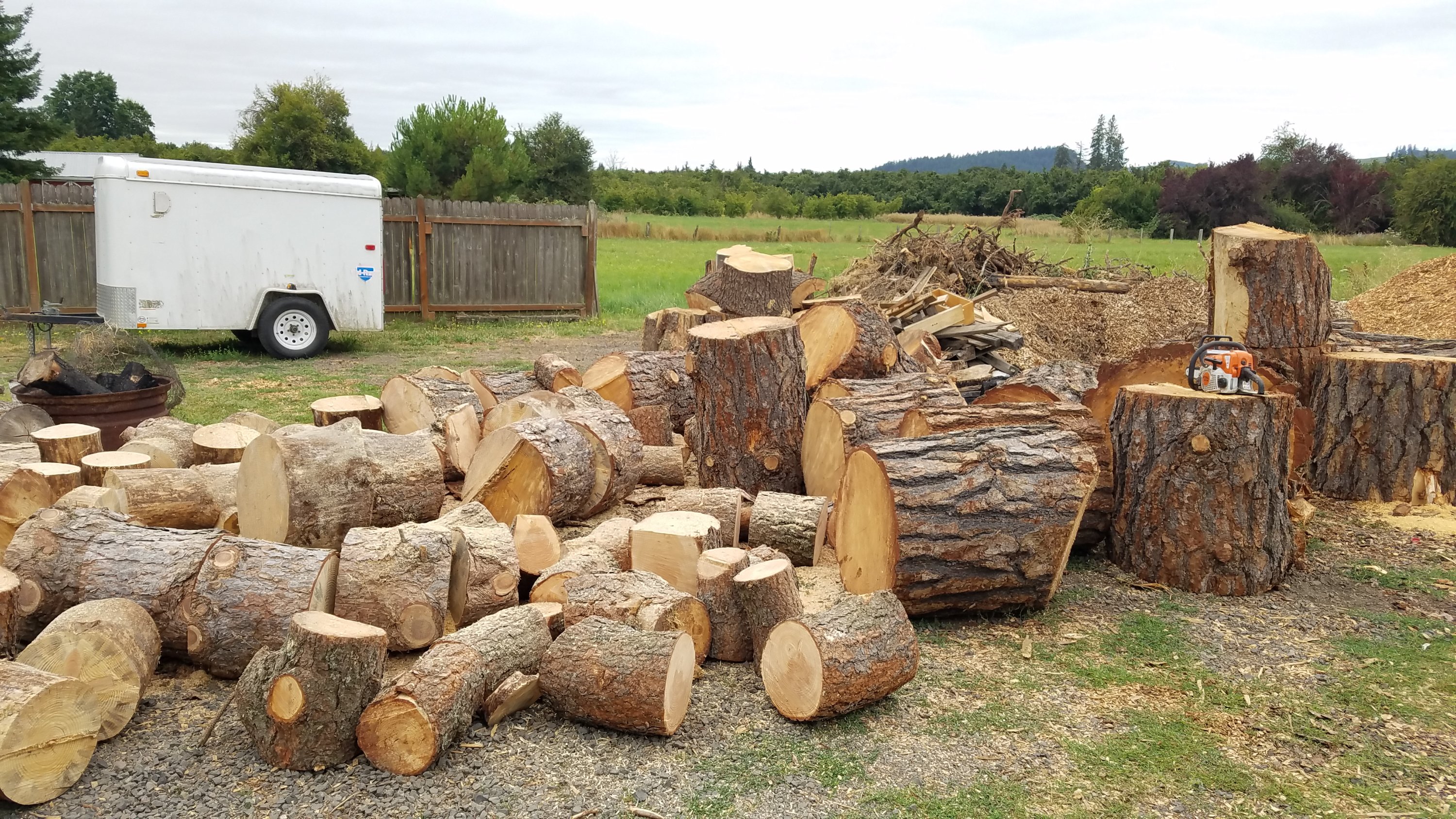
Here’s our entire plum harvest for this year:

But the blackberries– wow! It’s a bumper year!
The pole beans are late but looking really lush:
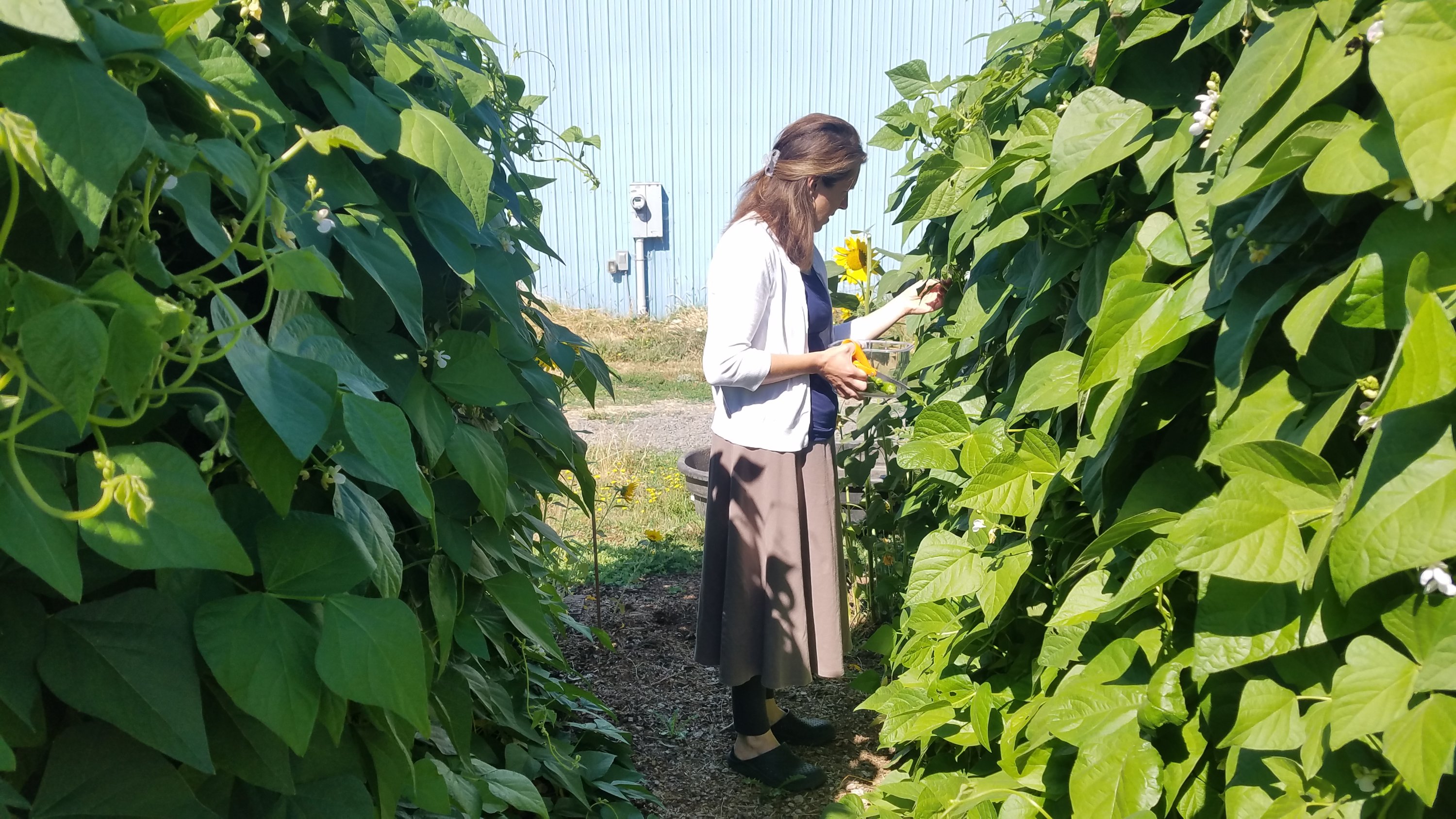
Wacky summer. 3/5. Would not do this again.
We had a really slow start to summer in May+June with super cold + wet weather. Then this past week (last week of July) has been 7 days of 100.
Our rag-tag garden is producing, and I’m keeping my expectations low.
The neighbor’s hay was cut yesterday, a few weeks later than last year. I’ve heard this is a bumper year for hay. If my allergies are any evidence, I’d say it’s true. The neighbor’s fence took a bit of a thrashing yesterday, too.
It’s July 3rd and our peas are producing like crazy. Everything else is just struggling. We’ve had a few days of strong sunshine, but many days are “Seattle gray”–meaning it’s 100 percent cloud cover in the morning, burning off to 80 percent cloud cover by 3pm.
Honestly, I don’t know if we’ll get tomatoes or beans this year. If we do, it will be a miracle–and I don’t use that word hyperbolically.
I planted the last batch of corn today. I think it might be too late, but we’ll see.
Gophers ate my garlic. A lot of it. Maybe it was one lone gopher, maybe it was an underground army of gophers. I don’t know, but I do know that I was planning on a massive garlic harvest this year, and that dream is now writhing on the ground like a half-dead burrito.
Over the past few months I have watched gophers systematically take down bulb after bulb in my precious garlic patch, taking out half of my elephant garlic, half of my hard neck garlic and half of my soft neck garlic.
Gophers are extremely hard to exterminate with a pellet gun–I’ve tried. They only pop up for a few seconds before heading back down. It’s really a game of crazy luck to be able to see a gopher and have time to open the window, load and aim before the furry garlic theif goes back down. I’ve done it once in my lifetime, and I earned the respect of everyone that my husband told the story to. “The day Heather shot a gopher from the kitchen window.” I faked modesty whenever he told the story, but I was dang proud and still am.
This morning I looked out the window and noticed two more stalks of my elephant garlic were sideways. I went out to survey the damage, when I noticed a burrito-sized animal writhing a few inches away from a freshly dug hole near the elephant garlic.
It was a partially-alive gopher–with an aching belly full of my garlic, no doubt. I poked it with the fallen green stems left over from its elephant garlic bulb feast. It continued to squirm. It was awful. I felt bad for its suffering, but still had time to deliver this powerful, embarrassingly loud speach, that hopefully struck fear and dread into the hearts of nearby sub-earth dwellers (and unfortunately, a few people walking by):
“YOU SHOULD NOT EAT MY GARLIC. THAT IS NOT A NICE THING TO DO. THIS IS MY GARLIC AND I DON’T WANT TO SHARE IT. YOU ATE SO MUCH, AND THAT IS PROBABLY WHY THIS TERRIBLE THING IS HAPPENING TO YOU. DO NOT EAT MY GARLIC.”
And so, I publicly issue this warning to all sub-earth dwellers: Let the words of my impassioned, bold speech echo in your ears, and share these words with your fellow ground dwellers, your children and your children’s friends, since you probably won’t live long enough to meet your grandchildren.
Respectfully,
The Owner of the Garlic
We have a new “garden tool:” the drone. Now we can get super accurate shots of the garden throughout the season. This one is from June 16:
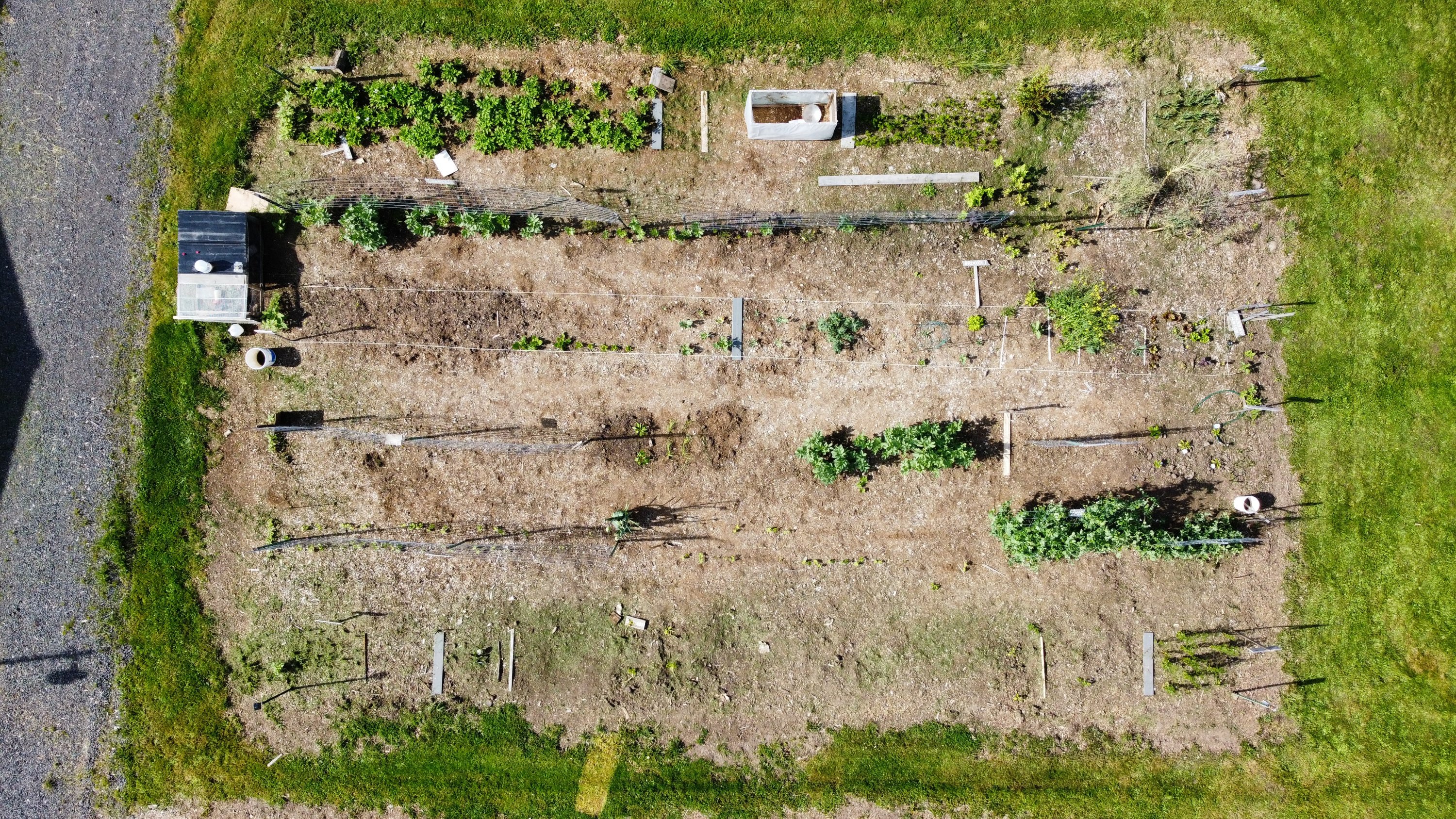
We had a super rainy winter and spring, somewhere around double the average. But all of a sudden the rain stopped on June 20, the day before summer.
I pulled out the soaker hoses today. They were chewed to bits by rodents. I ordered new ones.
The months of February through June were a series of time-delayed successes.
A.k.a. “failures”
I learned, relearned, and forgot what I learned–then remembered it again.
All this is to say that today is June 7th and we have fresh sugar snap peas, new spring kale (as opposed to the old flowering kale from last year), orach, green chard, and lots of robust plants that we’ll harvest over the summer (like carrots, potatoes, beans, tomatoes, shelling beans, cucumbers, squashes, and peppers) .
This post is also to say that I will be taking up a new hobby next winter. This winter my hobby was “planting seeds too early and watching them die.” It was tedious.
I learned this winter that if you plant seeds that need to be in their pots for more than 2 weeks, you need to have a bigger pot. I used tiny cells and 90% of the seedlings died. I also learned that just because last April was hot didn’t mean that this April, or May or June (so far) will follow suit. It’s been a cold + wet spring. Even the cold weather crops languished.
Our family loves being outdoors–and we’ve hiked and backpacked together for many miles. Someone once asked me a question on one of our backpacking trips that I think can be applied to gardening:
Do you hike to camp, or camp to hike? (Not that it’s relevant here, but I’m a “hike to camp” person. I love getting hunkered, cozy and settled under a tree.)
So, when it comes to gardening + eating fresh produce, which do I love more–being in the garden or eating the food from the garden? Do I live to garden, or garden to live?
Both. The fresh produce feeds me physically and working in the garden feeds me spiritually. I love the cycle of sowing + reaping. I love the being surprised by scrappy, vigorous volunteer plants. I love watching seedlings reach toward the light while building a strong root system underground. I find physical and spiritual nourishment in both the garden and the harvest. It’s no surprise that throughout God relationship with mankind, he chooses to show his love for us in gardens. It’s a place where I feel gratitude, peace, and abundance.
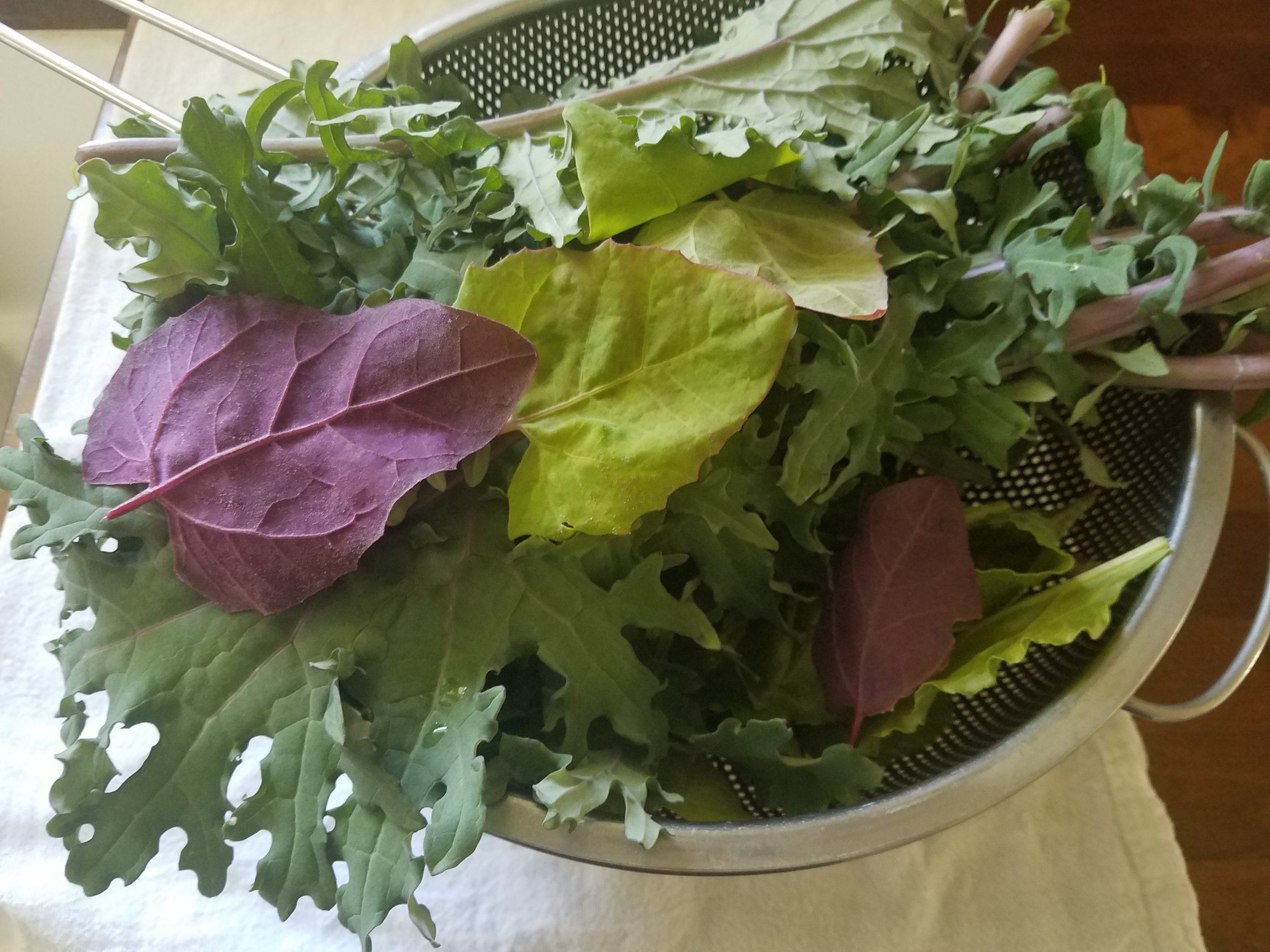
I planted the first 8 corn seeds. I think I’ll do 8 more each week for the next few weeks.
We think spring is finally here. We’ll have highs in the 70s and lows around 50 this week.
The potatoes and peas are doing well… and of course the garlic. Everything else is small, even the cilantro, broccoli, and kale.

If there’s no pics, it didn’t happen.
(Then why are there 12 bebe quail in my barn?)
Pics coming!!
Hatched April 15th.
Hello, snow. It’s nice to see you on the mountain today. We can’t wait to see you in December. Don’t bother coming down to our elevation today or tomorrow or Thursday. I know you’re super busy in the Portland area, so let’s just plan on celebrating Thanksgiving or Christmas together this year. Ok! Bye!
Today I got stuff done.
I planted all my cilantro (15 plants??). I put a few mizuna plants on the greens row. I planted 3 packets of carrots (white, red, black). I also planted a few kales. Happy day!
This week is spring! I think the ground is ready to get things growing.
I wanted to plant spring hard white wheat this week, but the ground is water logged in the area where I want to plant it. I might wait until fall. Or I might wait a few weeks and plant once the ground drains a little.
I talked to my sibs this week, and they said they’re not planting a garden this year because of the drought where they live. Having a garden not only heals the earth, provides biomass, and sequesters carbon, but the large leaves of some garden plants can serve as a mulch and living shade, which preserves precious moisture. Many plants are water wise. When they said that none of them were planting a garden, I felt my heart rip in half. And then rip in half again. And then one more time, but not as loud as the first two times. So, eight pieces total. Of my heart. Sad.
Back to happy things. My greenhouse is working! Everything in there is growing and happy! I even have a gopher that pops up every couple days to say hello, and bask in the warmth. The gopher’s name is Sheila.
One. More. Thing. Let’s all give a big South Dakota welcome to our new drake, Franklin. Franklin is from Newberg. He was best friends with two donkeys before he joined our farm. He adores Maggie. They swim together all day. Their goal is to raise 12 ducklings this spring, then 12 more next spring. ❤️
I have a kale goal:
I want year-round kale.
That means that I have to plant kale seed indoors in the winter, so that when our over-wintered kale goes to seed (which it did last week) we can set out the new baby kale.
I did that. I planted my seed in early February, then killed it late February. I started more seeds in early March, but the plants are as teeny tiny as the lovely, lush Central American country of El Salvador.
We are eating our flowering kale like it’s broccoli, because it looks exactly like broccoli. I’ll steam it, then put a half pat of butter on it.
Because of my singular kale goal, I had to say goodbye to our last two turkeys. They were sweet, but the kale was their favorite treat. It was at beak level, and they nipped off every fresh leaf, every day this winter, leaving us NONE leafs of kale! We have a fenced back pasture, but turkeys can fly 10+feet, and no fence can hold them.
We have some fun varieties of chard and other greens that we’ll be growing along with our kale. The more greens, the better.
I’ll share one more goal. I want to eat fresh from our garden 365 days a year. I think I might make a little sign for our house that’s like “_____ Days Since Last Safety Incident” (but for Days We’ve Eaten From Our Garden) just to see if we can eat from our garden every day this year. I think we can do it.
Good news! All of the peas I planted in our garden waaay back in February are now sprouted. Hello and good morning! I will never plant peas in February again. I will always plant them in early to mid March. February is not the time to plant anything in the garden. February is a time to plan, learn, teach, prepare, and organize.
I decided to plant fava beans today, as a cover crop. I put them in the tomato row and the pepper\cucumber row. It’s my first time putting down a cover crop. I sowed “Sweet Loraine Improved” fava beans.
While I was wandering around the garden, observing and thinking, I saw happy clusters of some friends I spent a lot of time with last summer. They were orach seedlings! I loved orach last year because it was happy in the cold, happy in the heat, it was tall, generous, soft, and never bitter. It sometimes goes by the name “mountain spinach”. We bought a pack of orach seeds last year that had five different colors of orach. I think all five colors sent out their seeds, and we will be flush with orach in a few weeks!
I have a few 1020 flats of seedlings that I think are going to go to the greenhouse. Our greenhouse isn’t cooled or heated. It’s my first year with a greenhouse, and I’ve already killed off a few flats because i wasn’t sure how warm or cool the greenhouse would be. Now that it’s March, we are above freezing on most nights. I think I’ll move my cool weather crop seedlings out. I don’t know if I can move my warm weather seedlings out yet. Maybe I’ll try.
Even though I spent a lot of time putting together my garden plan and mapping out where each vegetable would be, I have to be flexible. The orach volunteers ended up on the tomato row. Maybe a couple tomato volunteers will end up on the greens row. I could dig them up and transplant them. But maybe this divine chaos is what I need in my garden and in my life–allowing beauty and life to grow wherever there is space for it.